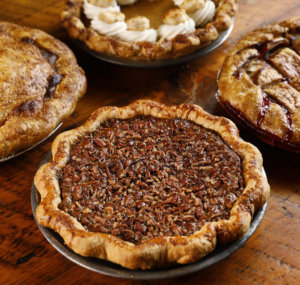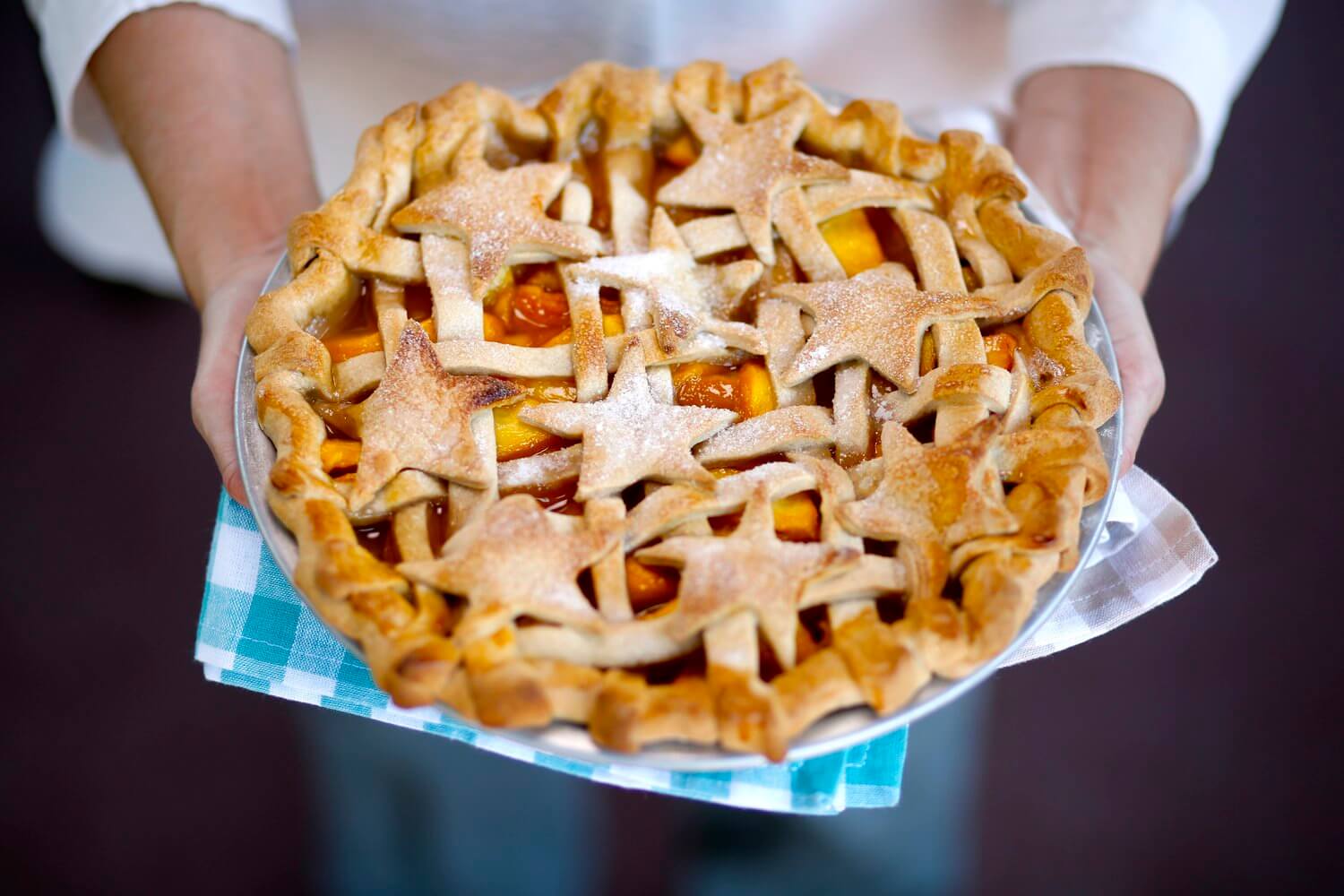
End of Summer and Peach Season
by Chef Deb Traylor
It’s hard to believe we’re at the end of summer in the Colorado Rockies. This is my favorite time of year, the delicious time when summer kisses fall. Days are cooler and nights require a jacket, the air is crisp and it’s absolutely perfect. It’s really a great time to be in Colorado. For those of you who only visit during ski season, it’s worth it to visit during late, late summer.
Not only does cooler air signify the end of summer, it also means an abundance of produce from our local farmers and orchards. Currently we are near the end of Colorado peach season and the lines are long at the markets. Everyone wants to grab the last reminders of summer and preserve, freeze or bake the juicy peaches that have made the area around Palisade famous.
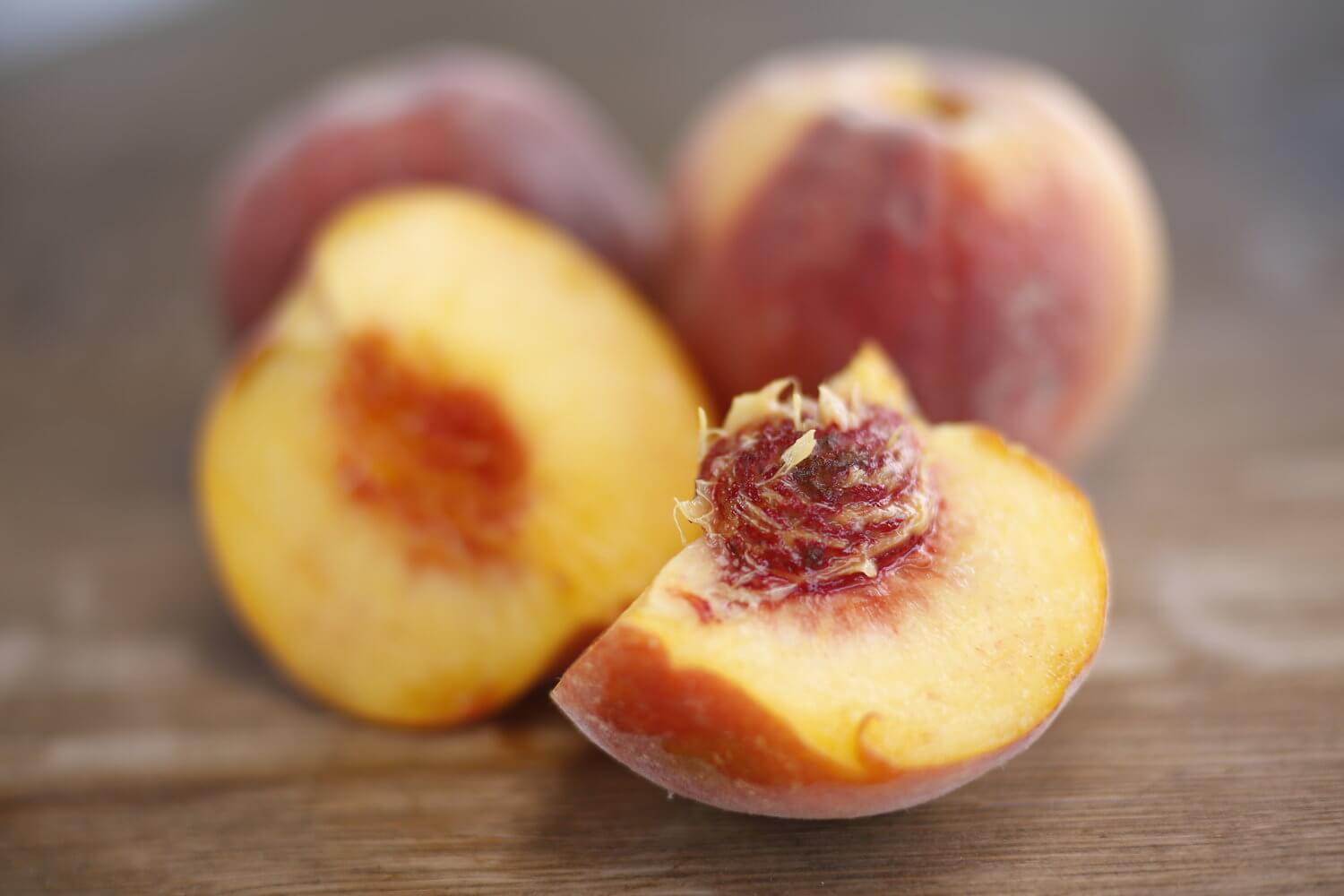
I have to admit stone fruit pies have been a struggle for me. In fact, when Ginger asks me to make a peach pie, I’ll look for a million ways to distract her or change her mind. You see peach/apricot pies are my Achilles heel. I’m a creative perfectionist. I want perfection every time. I want crisp, flaky crust, discernible fruit, a nice hold without a floury or gummy texture and not too much sugar. Sounds easy enough right? Alas, it has not been easy, as least for me. But I’m not a quitter and I’ve done a fair amount of testing, and I think we’ve come darn close with this recipe, combining our tried and true crust and borrowing a few ideas from America’s Test Kitchen. That said I’m willing to fall on my sword and would happily trade an offspring for a foolproof, perfect every time peach pie recipe. 🙂

Lattice-Top Peach Pie
(filling adapted from the America’s Test Kitchen Family Baking Book)
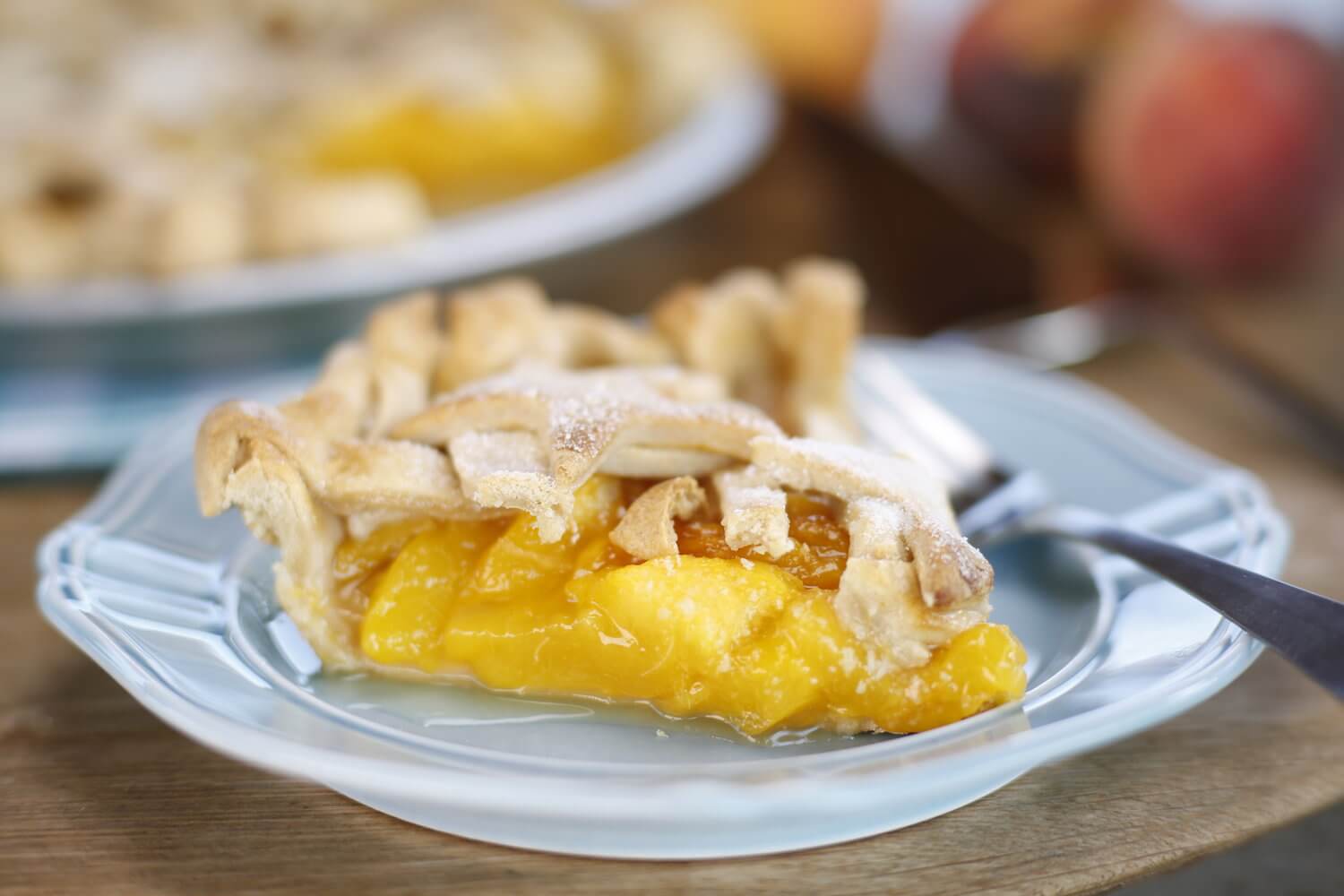
- Basic Pie Dough (see below)
- 2.5 lbs. fresh peaches (5-7) peeled or unpeeled, pitted and sliced 1/2 inch thick
- 1-1 1/2 cups sugar, plus 1 Tbsp. for finishing
- 4 tsp. cornstarch
- 1 Tbsp. fresh lemon juice
- pinch of salt
- egg wash: 1 egg whisked with 1 Tbsp. water
Prepare dough, form into two disks, cover in plastic wrap and chill for 4 hours or overnight.
Toss the peaches with 1 cup of sugar in a large bowl and let sit for 1 hour. If the peaches are tart, add up to 1/4 to 1/2 cup more sugar. While the peaches are macerating, begin rolling out the dough.
On a floured surface, roll one disk of dough to a 12” circle, and fit it onto 9” pie plate that has been sprayed with cooking spray. Let the excess dough hang over the sides. Cover lightly and chill for at least 30 minutes
On a floured surface roll the second disk of dough into a large rectangle: shoot for 13 x 10, but if you can go little larger. Transfer the dough to a parchment lined sheet pan and using a pastry cutter or a knife, cut the dough lengthwise into 8-10 strips. I like to vary the sizes. Separate the strips a little, cover and freeze for 30 minutes.
Preheat the oven to 425 degrees and adjust oven rack to the lowest position. Line a rimmed baking sheet with foil, and place it on the rack to heat.
Drain the peaches over a bowl into a colander. Reserve 1/4 cup peach juice (save the rest for blinis or freeze it in a popsicle). Reusing the original bowl, toss the drained fruit w/ 1/4 cup juice, cornstarch, lemon juice and salt until combined.
Remove pie pan from the fridge and the dough strips from the freezer. Spread peach mixture over dough-lined pie pan and weave the dough strips over the top. Wait 10 minutes for the strips to thaw, then trim and decorate the edge. Brush the top of lattice with egg wash and sprinkle 1 tablespoon sugar over the top.
Place the pie on heated baking sheet and bake for approximately 25 minutes or until top is golden. Rotate the pan, and reduce the oven to 325 degrees and continue to bake until the juices are hot and bubbling and the crust is deep golden brown. Remove pie from oven and cool on a rack for at least 2 hours or until the filling has set. Serve warm or at room temperature.
A Few Notes:
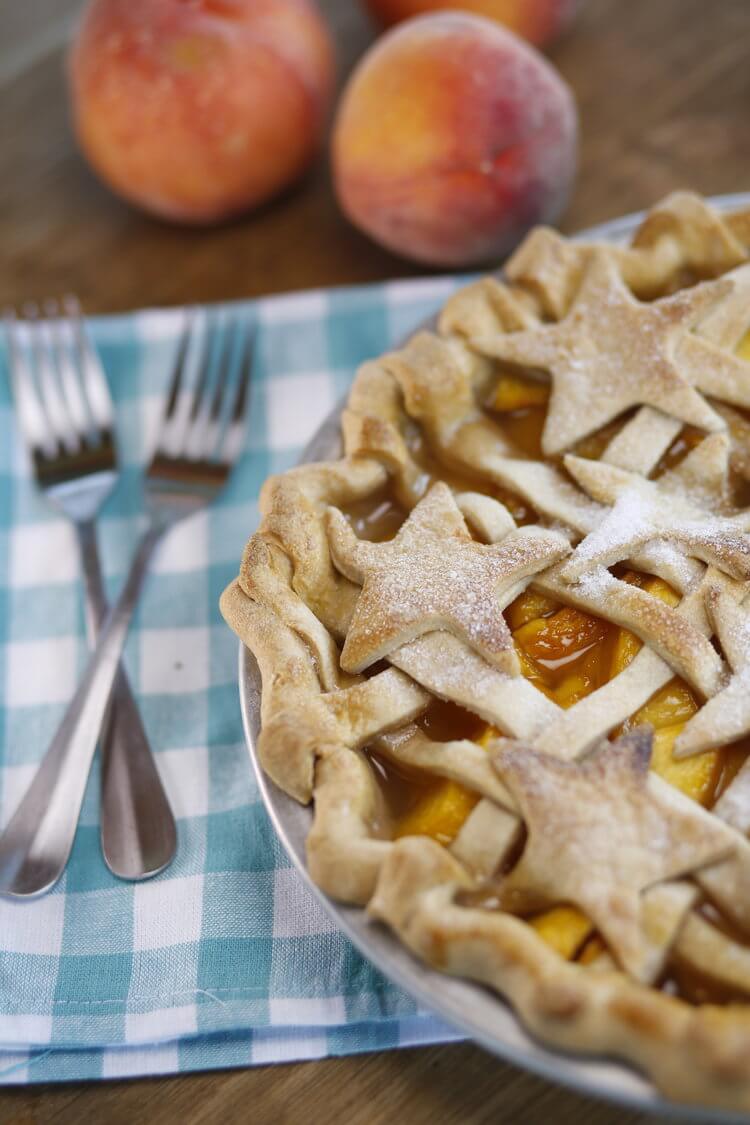
- You can peel your peaches or leave the skin on; it’s a personal preference. In professional kitchens, peaches are usually peeled (with a serrated peeler or in boiling water and an ice bath – lots of options are found on the internet). Personally, I leave the skins on as I love the little bits of color and texture the skin provides.
- We strongly suggest making a lattice top for this pie. The openings in the dough allow moisture to evaporate, helping to prevent the sometimes soupy filling when peaches are at their peak. Plus, it’s so pretty! Use decorative cutters with leftover dough if you wish.
- The dough is our standard recipe, except we’ve increased the ingredients by 50% to allow you more dough for the lattice top.
- You will not want to use a ceramic or glass pie plate for this recipe. The pie pan is chilled in the refrigerator and placed on a very hot sheet pan to bake. Glass or ceramic might shatter with the high temperature variation.
Basic Pie Dough
- 3 3/4 cups flour
- 5 Tbsp. sugar
- 1 1/2 tsp. fine sea salt
- 1 cup + 2 Tbsp. unsalted butter, cut into 1/2 inch pieces, chilled
- 6 Tbsp. non-hydrogenated vegetable shortening, cut into 1/2 inch pieces, chilled (or 6 Tbsp. additional butter if not using shortening)
- 3/4 cup ice cold water
- 1 1/2 tsp. lemon juice or vinegar
Combine flour, sugar and salt in a medium bowl. Add chilled butter and shortening and toss to completely coat with flour. Using your hands or a fork, quickly smash the pieces of butter/shortening between your thumb and fingers to flatten each piece to the size of a dime. Gently stir the flour and butter to make sure you flattened most of the pieces.
Combine ice cold water and lemon juice (or vinegar), and drizzle half of the lemon water over cold flour mixture and stir until the dough just starts to come together or turns “shaggy”. We prefer to use our hands but a fork works nicely too. Begin adding a few more tablespoons of water at a time, stirring between each addition. Once most of the water has been used (but you have a tablespoon or two remaining) use your hands to gather the shaggy strands into a ball and knead the dough two or three times. If you have dry bits remaining in the bowl, add a little additional water. (Your dough may appear wet or dry depending the climate in your area, so you will need to go slowly and adjust accordingly.) Gather the dough in a ball, dust your counter with a tiny amount of flour, and quickly pat dough into a small flat disk. Cut dough in half and then stack one piece on top of the other, flour side down. Use the heel of your hand and press the dough down and divide in half once more. Cover both pieces with plastic wrap. Chill the dough for at least 4 hours or overnight. This dough can be made a day or two in advance.


